ArtCenter College of Design
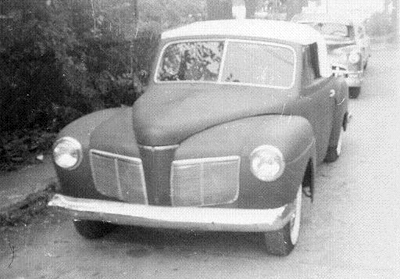
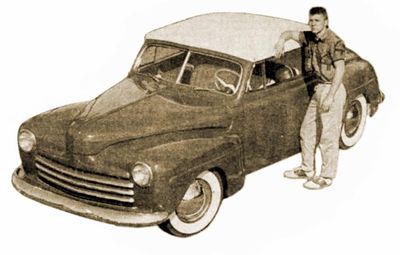


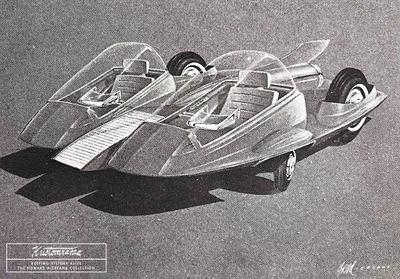

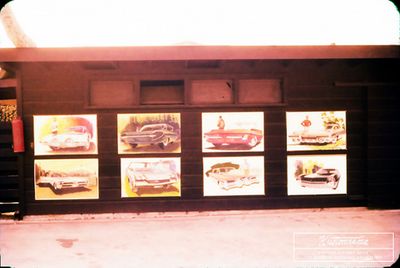
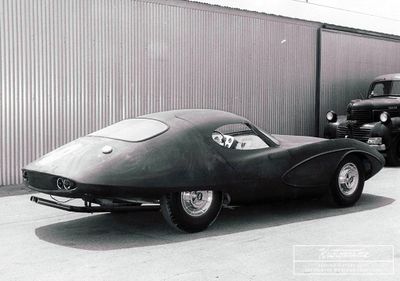




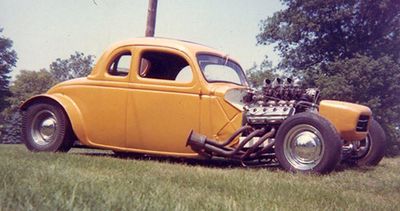
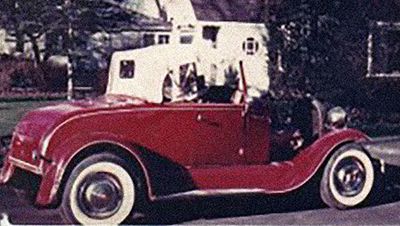

Nestled in the vibrant city of Pasadena, California, ArtCenter College of Design has been a beacon of creativity since its inception in 1930. Known informally as "Art Center," this institution started as The Art Center School and later evolved into a degree-granting college in 1965. It's not just a college; it's a community where artists and designers are nurtured by working professionals, bringing an industry-friendly vibe that many art schools can only dream of.[3]
Contents
- 1 The Iconic Dot and a Splash of Orange
- 2 Campuses That Inspire
- 3 Larry Wood's Experience at Art Center in the 1960s
- 4 Education That Transforms
- 5 Legacy of Influence
- 6 ArtCenter Today and Tomorrow
- 7 Masters of Design: The Esteemed Instructors of ArtCenter
- 8 Creative Minds Shaped Here: Notable ArtCenter Graduates
- 9 References
The Iconic Dot and a Splash of Orange
One can't talk about ArtCenter without mentioning its iconic logo, the orange dot. This simple yet powerful symbol has been part of the school's identity since the beginning, resonating with Southern California's sun and citrus. The color orange, chosen by founder Edward A. "Tink" Adams for its vibrancy and energy, has remained a constant in the college's identity, with its shade evolving over time.[3]
Campuses That Inspire
ArtCenter comprises two architecturally significant campuses in Pasadena. The Hillside Campus, designed by modernist architect Craig Ellwood, is a sight to behold, spanning an arroyo and roadway. It's a space where creativity meets nature, offering students a unique environment to learn and create. The South Campus, a former aircraft-testing facility housed in 2023 graduate programs and studios, and was known for its dynamic exhibition space, the Wind Tunnel.[3]
Larry Wood's Experience at Art Center in the 1960s
Famed Hot Wheels designer Larry Wood's journey at Art Center began through an ad in Motor Trend Magazine. As a teenager, Larry's interest shifted towards cars. The catalyst for this change was a Hot Rod Magazine his father brought home. "He was a coach, and one of his guys was reading a magazine during football or something. He brought home this Hot Rod Magazine and put it on the kitchen table, just threw it down there. I picked that up, and it was like the switch went off. It was like, holy mackerel, look at what they're doing in California with these hot rods and customs. That got me going," he told Brad King in an interview he did for the Stories N' Steel YouTube Channel. This newfound fascination led him to start working on cars himself, experimenting in a shed behind his house. Larry also spent considerable time in high school drawing cars. Once a casual hobby, these drawings now seemed like the seeds of a potential career. Encouraged by the colorful world of 1950s automobiles that fascinated him and the Hot Rod Magazine that had always inspired him, Larry decided to pivot his life toward a new direction. The catalyst for this change came in the form of an advertisement in a Motor Trend Magazine. It was an announcement for the Art Center, a school that promised to teach car design and drawing. The opportunity to professionally draw cars, to transform his sketches into a career, was irresistible to Larry. He gathered his drawings and approached his mother, an art teacher, to help him craft a unique portfolio. Together, they created a portfolio resembling an artist's palette, complete with a finger hole, paint colors, and a painted brush. This portfolio wasn't just a collection of drawings; it was a statement of Larry's creativity and ambition.[4]
Larry's application to the Art Center was a leap of faith. He doubted his chances, aware that his skills were self-taught and unconventional. Yet, the Art Center sought potential and imagination, not just technical prowess. They were looking for individuals ready to take their art to the next level, and Larry's portfolio – brimming with creativity and a raw perspective on car design – caught their attention. Receiving the acceptance letter from the Art Center was a turning point in Larry's life. It meant leaving Hartford for California, a place vastly different from what he knew. When Larry first arrived at the Art Center, they gave him a list of places to stay. "I said, okay, where am I going?" He was told to walk down Third Street until he found a place to live. "I got my thing, and I got my map. I must have walked four miles. So I finally found a place that would take me because other places were already full." This place was a unique setup where the third floor of the house was transformed into art studios for Art Center students. Here, Larry and his fellow aspiring artists lived, worked, and fueled their creative passions. This communal living situation created a nurturing environment for Larry and his peers. They were constantly immersed in creativity, surrounded by like-minded individuals, sharing meals, and indulging in good-natured pranks. The atmosphere was not just about fostering artistic skills but also about building a community that supported each other's artistic growth.[4]
However, the Art Center was not just a place for camaraderie and creativity; it was a rigorous institution that challenged its students to their core. Larry quickly realized that the journey to becoming a car designer was not going to be an easy ride. For the first couple of years, he wasn’t even allowed to draw cars. Instead, the curriculum focused heavily on mastering the fundamentals like colors and perspective. This strict approach to education was an eye-opener for Larry. He learned that to excel in car design, he needed a strong foundation in these basic elements. When Larry started at Art Center, there were 50 students in class. Only six graduated. "So that was Art Center," Larry told King, adding that they were tough. "Half were gone the first year." Larry got called into a meeting once because his teacher was Strother MacMinn, and his thing was streamlined cars. "He loved streamlined cars. He said all the cars someday will be pointed in the front and pointed in the back. Streamlined cars. I'm a hot rodder. I'm doing blowers on the hood. I'm putting side pipes on the thing. I'm putting big tires on the back." One day, Larry got called into a meeting where they told him you won't make it. "What crap? I'm the king. I'm doing great. No, you're not listening to the teacher." That was a big breakthrough for Larry, and he returned very humble. He realized that they were right. "I mean, you go to Detroit; they're not paying you to do hot rods. So I graduated in 65, and went to Detroit." Larry emerged from the Art Center not just as a skilled artist but as a visionary designer, ready to make his mark in the automotive world. His graduation in 1965 was not just the completion of a course but the beginning of a remarkable career in car design, taking him next to the bustling city of Detroit.[4]
Education That Transforms
In 2023, the college offered a range of undergraduate and graduate programs in art and design fields, along with public programs for all ages. What sets ArtCenter apart is its commitment to integrating making and doing with conceptual thinking, honing craftsmanship, precision, and professionalism. The faculty, primarily working professionals, bring real-world insights that enrich the learning experience.[3]
Legacy of Influence
ArtCenter's influence extends far beyond its campuses. It was the first design college to receive NGO status by the United Nations, recognizing its role in addressing social and humanitarian issues through design. The college's alumni have significantly impacted popular culture and various industries. This is evident in the establishment of scholarships like the Mike Kelley Endowed Scholarship, honoring influential mentors and providing access to future artists.[3]
ArtCenter Today and Tomorrow
Today, ArtCenter continues to be a hub for aspiring artists and designers, recognized by industry publications and global rankings for its outstanding programs, especially in industrial and film design. With ongoing expansions and initiatives, ArtCenter is not just looking back at its storied past but is also forging a path for future creative minds.[3]
Masters of Design: The Esteemed Instructors of ArtCenter
Creative Minds Shaped Here: Notable ArtCenter Graduates
- Andy Graybeal
- Ben Delphia
- Gale Morris
- George Angersbach
- Howard Miereanu
- Hugh Nutting
- Jack Telnack
- John Manoogian II
- Larry Wood
- Peter Brock
- Richard Nesbitt
- Roy Lonberger
- Syd Mead
References
Did you enjoy this article?
Kustomrama is an encyclopedia dedicated to preserve, share and protect traditional hot rod and custom car history from all over the world.
- Help us keep history alive. For as little as 2.99 USD a month you can become a monthly supporter. Click here to learn more.
- Subscribe to our free newsletter and receive regular updates and stories from Kustomrama.
- Do you know someone who would enjoy this article? Click here to forward it.
Can you help us make this article better?
Please get in touch with us at mail@kustomrama.com if you have additional information or photos to share about ArtCenter College of Design.
This article was made possible by:
SunTec Auto Glass - Auto Glass Services on Vintage and Classic Cars
Finding a replacement windshield, back or side glass can be a difficult task when restoring your vintage or custom classic car. It doesn't have to be though now with auto glass specialist companies like www.suntecautoglass.com. They can source OEM or OEM-equivalent glass for older makes/models; which will ensure a proper fit every time. Check them out for more details!
Do you want to see your company here? Click here for more info about how you can advertise your business on Kustomrama.





